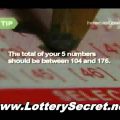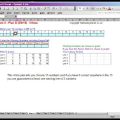Health Lottery Software AMAZING Predictions
This is not rocket science – the concepts here are largely intuitive.
The theory is that all numbers will appear in equal frequency over a very long period of time. However, in the short term, there are patterns and cycles. There are numbers that have ‘dry spells’, and there are numbers that simply seem to be there each draw over a period of time.
There are repeating pairs and triplets, odd and even analysis, sums under or over certain limits for the six numbers, recent frequency, overdue, least drawn within the last n draws, most number of draws since last drawn, etc., etc. These are the basic techniques used to choose which numbers to play. What are your thoughts? Which filters would be the best? There are many opinions …
There are quite a few statistical techniques that will process the previous winning numbers that were drawn over some period of time, and then pick a set of numbers to play. See below for more information.
The drawing of the numbers in a lottery is completely random, within the changing probabilities of the draw. But often, these events do not seem particularly random – repeating numbers and patterns are sometimes easy to see.
Short term patterns do happen often. The trick is to identify which pattern is valid at what point. While this might seem somewhat akin to divining water, you can still get far better odds of winning than simply choosing a few computer-generated or special number tickets. You get these better odds by analyzing the previous numbers drawn, while using a wheeling technique to filter out ‘inappropriate’ numbers and combinations.
What is inappropriate? Perhaps an analysis of the distribution of winning numbers will show that the sum of those numbers is between 28 and 43 in 97% of the draws. This is obviously one thing to consider – too many low or high numbers will be drawn only very rarely.
There are obvious possibilities such as a number that has not been drawn recently, or one that has been drawn less than probability dictates. There are always pairs and triplet’s of numbers drawn over short periods. One can look at the performance of odd and even numbers drawn each time.





Leave a Reply